#African Grey Parrot Health
Explore tagged Tumblr posts
Text
Is Your African Grey Drinking Enough Water?
Is your African Grey drinking enough water? Learn signs of dehydration, tips to encourage hydration, and keep your bird healthy with this easy guide!
#african grey lifespan#african grey parrot care#africangrey#tiktokparrot#african grey parrot lifespan in captivity#african grey parrot#buying an african grey parrot#african grey#cute birds#african grey behavior#African Grey drinking enough water#African Grey feather health#African Grey hydration problems#african grey life#African Grey parrot activity levels#african grey parrot behavior#African Grey Parrot Care#African Grey Parrot Diet#african grey parrot Droppings#African Grey Parrot Health#African Grey parrot hydration#African Grey parrot lethargy#African Grey Parrot misting#African Grey parrot stress and dehydration#african grey parrot website#African Grey parrot wellness#african grey website#apple cider vinegar for parrots#best water for parrots#coconut water for parrots
0 notes
Text
Essential Care Tips for African Gray Parrots
Read full story on-line: #CommonPetBirds #AfricanGrayParrot #ParrotCare #BirdHealth #PetBirds #FeatherCare #AvianHealth #BirdEnrichment #ParrotLovers #HealthyParrots #PetBirdCare #BirdsOfInstagram #AvianVeterinary #Birds #PetCareTips
Common Conditions of African Gray (Grey) Birds African Gray Parrots, known for their remarkable intelligence and vibrant personalities, require specialized care to thrive. Unfortunately, pet birds, including African Grays, can develop health issues when not provided with proper nutrition or care. Although many avian diseases can impact various species, some conditions are more prevalent in…
#African Gray#Animal Welfare#Aspergillosis#Avian Diseases#Bird Diet#Bird Enrichment#Bird Health#Feather Destructive Behavior#Grey Parrots#Nutritional Deficiencies#Parrot Care#Pet Birds#Psittacine Beak and Feather Disease#veterinary care
0 notes
Text
youtube
The Remarkable African Grey Parrot
Discover the incredible world of the African Grey Parrot, renowned for its intelligence and social nature!
Check out my other videos here: Animal Kingdom Animal Facts Animal Education
#Helpful Tips#Wild Wow Facts#African Grey Parrot#Parrot Intelligence#Talking Parrot#Parrot Training#African Grey Care#Exotic Birds#Parrot Speech#Bird Behavior#Pet Birds#Bird Training#African Grey Facts#Parrot Nutrition#Bird Enrichment#Grey Parrot Lifespan#Parrot Tricks#Bird Communication#Parrot Breeding#Parrot Vocalization#Bird Lovers#African Grey Talking#Smart Birds#Parrot Behavior#Parrot Bonding#Bird Health#African Grey Life#animal behavior#animal kingdom#animal science
0 notes
Text

Workout friend.
#exercise#workout#gym#health#graygooseblog#friends#parrot#portrait#sweet memory#grey parrot#african grey
1 note
·
View note
Text
★Random 141 headcanons
Ghost is on the aroace spectrum, only having sexual feelings towards someone under very specific circumstances or a very strong bond. He's probably only had one or two "partners" in his life, both spanning throughout grade school. He also has commitment issues due to the amount of people he has lost in his line of work.
Ghost is a very good listener, despite popular belief. You give him a good story or gossip and you best believe he is sat down directly beside you, his eyes never leaving yours between small invested nods or subtle reactions behind his balaclava-concealed face.
Ghost is a picky eater, though after having been in the military for years now it has significantly gotten better. Well, anything is better than those god forsaken MRE packs, anyway. He still has certain foods he will scrunch his face and glare at behind his mask, but still eat; though begrudgingly.
Price is definitely a gift giver. Randomly showing up one day in front of your barracks to present you a little trinket that he claimed reminded him of you.
Price is always checking up on his fellow soldiers, making sure they are taking care of themselves and not neglecting their own needs. He knows how many soldiers tend to neglect their mental health first hand.
Price had a massive sweet tooth. He claims to hate anything sweet and says chocolate tastes like "dog shite", but the second he's along with some good pastries or sweets, you bet your ass they're gone by the time you get back. He somehow never gets caught.
Soap is a huge adrenaline junkie. You ever going to a theme park? He's already begging on his hands and knees to go with you, practically dragging you by the arm onto every single roller coaster and giddy with adrenaline the entire time in the line. He has definitely been on the slingshot ride more than once.
Soap has definitely slipped the Scotland national anthem into your playlists more times than once, silently wheezing to himself as he watches you go about your day, only to suddenly stop everything you were doing to slowly turn to look at him, knowing exactly who did it.
Soap gives the best hugs. You having a rough day and just need some alone time? Well too bad, he's already halfway to your barracks just to pull you into his arms in a huge bear hug (bonus points if you're shorter and he can lift you). Somehow always seems to lighten someone's day no matter how upset they are.
Gaz takes up photography on his free time. He even invested in a fancy expensive camera to take logs and photos of places he's been, food he's eaten, scenery, and friends. His personal favorite is a picture of Soap in a bar piss-drunk while mid way singing his heart out to whatever was on the karaoke machine, his arm slung around Ghost's shoulder to support himself and a half empty scotch on-hand.
Gaz can play piano, and very well at that. It is one of those hidden talents that nobody would have suspected from him until it actually happened. The group is strolling around a plaza during their off days between missions, finding a stray piano and watching in shock as Gaz suddenly hops into the seat and gives the rest of the group a knowing look, before completely taking the show away. "The hell'd you learn t'do that, Sergeant?" Price practically choked on his cigar.
Gaz has a roommate back at home, as well as a pet... parrot? An African Grey to be exact. He is always eager to get back home to his beloved bird and roommate, one of which practically became family to him at this point. He doesn't talk about his personal life much, hence why the rest of 141 was so surprised to hear he had a roommate. The one day he invited 141 to his apartment after a mission just to hang out gave them quite the surprise when they heard two unfamiliar voices; one from his roommate, and one from the bird. Definitely scared Soap more than once.
#call of duty#john soap mactavish#simon ghost riley#captain john price#cod mw2#kyle gaz garrick#cod headcanons#cod mwiii#gaz cod#price cod#soap cod#cod ghost#cod modern warfare#pulled these out one day while working#school has been a pain in the ass give me a break#★fran writes
84 notes
·
View notes
Text



African Grey Parrots For Sale
All birds come along with health documents and other accessories
60 notes
·
View notes
Text
Types of pets AOT characters would have
Characters: Erwin, Hange, Miche, Levi, Moblit, Eren, Armin, Mikasa, Connie, Sasha, Jean, Reiner, Bertholt, Yumir, Historia (Christa), Petra, Oluo, Gunther, Eld, Nifa, Abel, Keiji, Tomas, Nannaba, Gelger, Henning, Lynne
Erwin: He'd have a male Chinook dog named Soldier. They're hardworking, which he appreciates, but they're also loyal and family devoted, so that means that they're good with kids. He takes the best care of his dog ever.
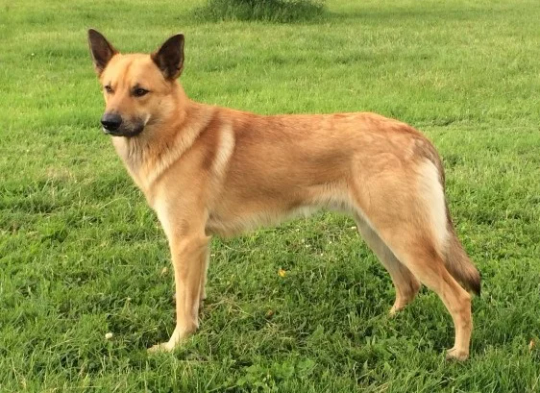
Hange: Definitely has a male Leachie Gecko. And a big one. Takes the best care of it and has somehow lived for like 20 years and is still thriving. They named it Bennidect Bartholemu Cambel.
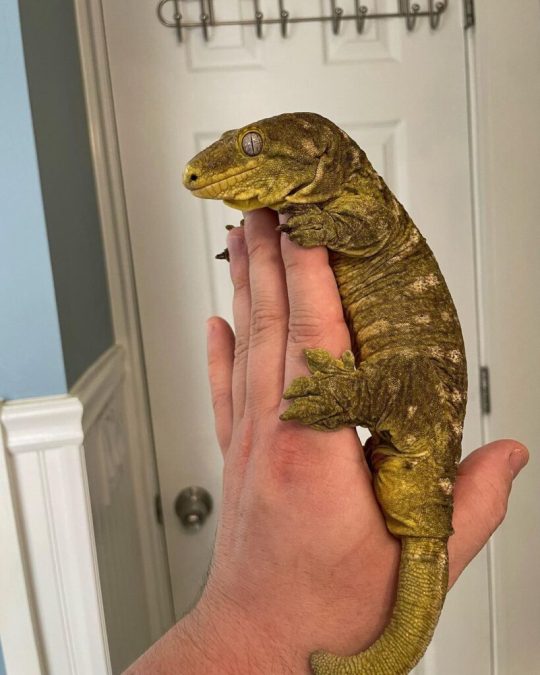
Levi: Hange won him a goldfish at the fair, and they named her Goldie. She's lived for 5 years and is in amazing health. Levi's actually grown to love Goldie a lot, which Hange kind of expected, but Miche and Erwin totally thought he'd give it back to Hange after like a week.
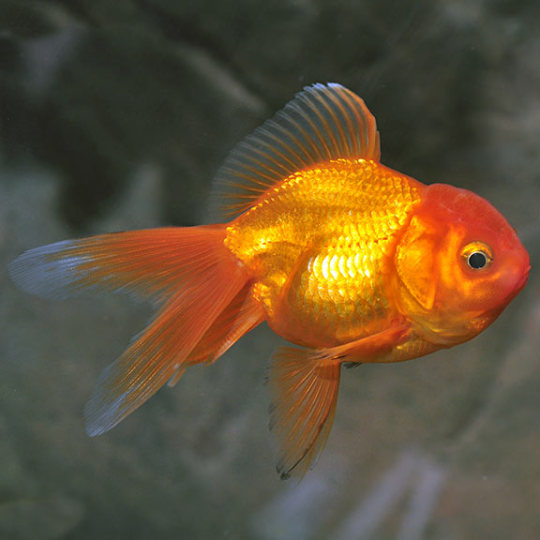
Miche: Has a huge male gray Bouvier des Flandres with longish hair and "bangs" that cover his eyes a bit. He probably named him Sherlock because he has "big locks of hair". Had to have his tail docked months before Miche adopted him, his tail got stepped on and crushed by a cow.
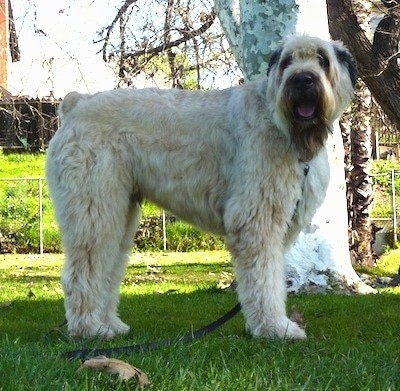
Moblit: Doesn't have a pet cause "Dealing with Hange takes the same amount of work" but he also helps with Hanges lizard because it's high maintenance.
Eren: He has a female African Grey Parrot that he named "Freiheit" which is German for "freedom." He talks to his parrot like it's a therapist. He also gets upset when someone says his Parrot's a girl, and he'll argue back with something like "no, actually he's a guy" even though the parrots a girl.
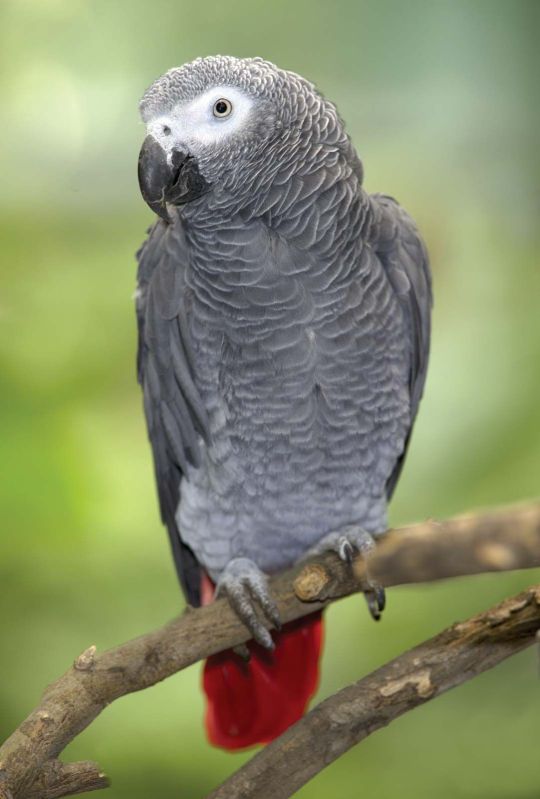
Armin: He has a male Eastern Box Turtle. He named him Squirt because when he adopted him, the first thing Squirt did was spit water at his face, so Armin thought it'd be appropriate to name him Squirt.
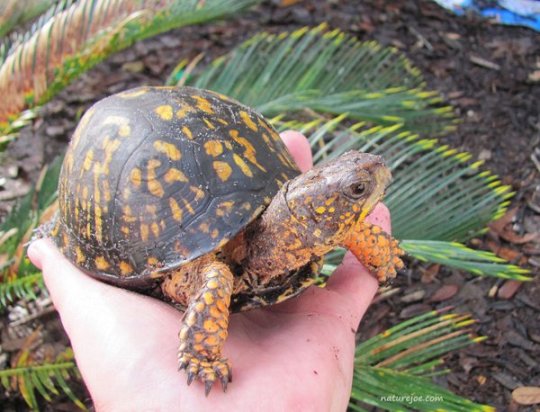
Mikasa: Female Maine Coon named Kiku. Her mother told her that the Kiku flower was her favorite flower and that it's believed the flower can prolong peoples lives.
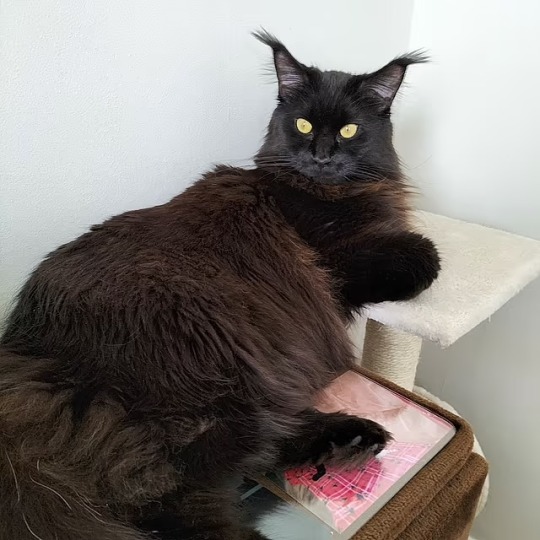
Connie: Male Hyacinth Macaw he named Destroyer since he thought he (THE BIRD) would be able to destroy anything in its path (A BIRD). He trained his bird to attack anyone he points at while screeching "CA CAW!"
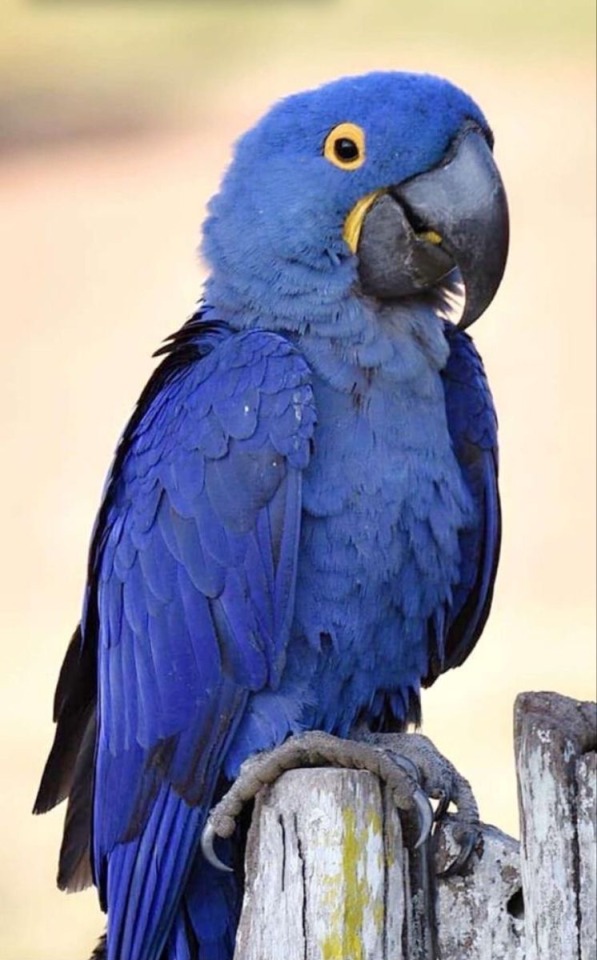
Sasha: Male squirrel she named Squirrelly. She didn't buy him from anywhere. She was literally sitting at the park and a squirrel came up to her and sat with her then followed her, and so she took him home and named him Squirrelly. That was 4 years ago.
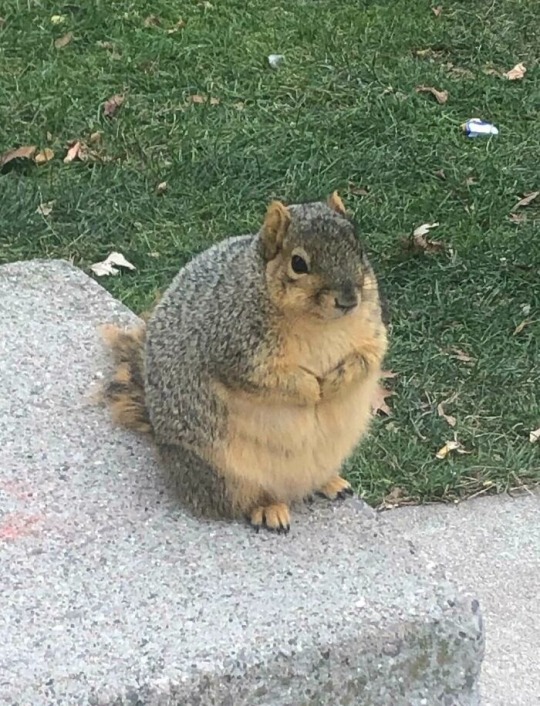
Jean: Male Collie named Zeus. He thought Zeus would be a cool awesome name for a dog. He also trained him to chase Eren on his command.
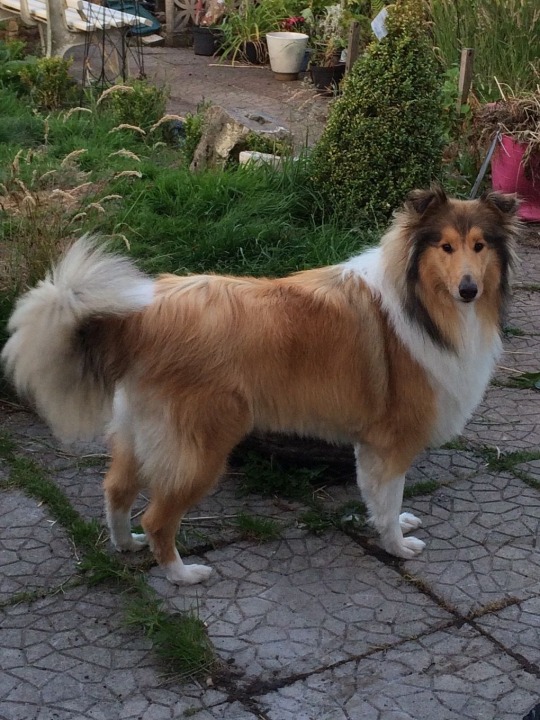
Reiner: Female Boxer he named Rocky. He also specifically tried to find one with unpinned ears and an undocked tail. He takes her on hikes all the time, and she loves them so much.
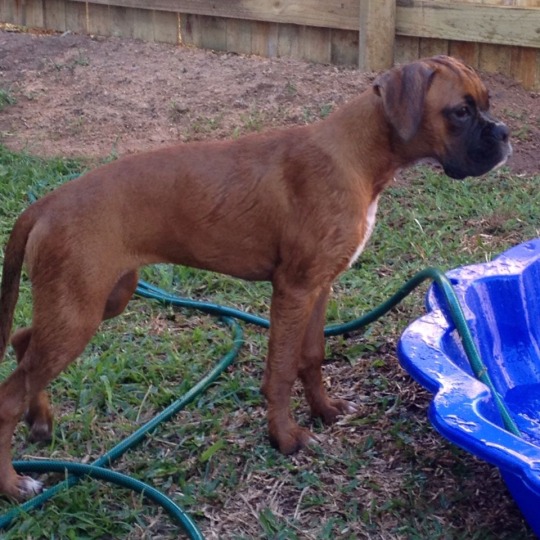
Bertholt: Male Ferret named Mozuku. He loved to eat Mozuku as a kid, so he named his Ferret after it. Sometimes really late at night he has a dance party with his Ferret, and he definitely has spent hours to teach his Ferret one trick.
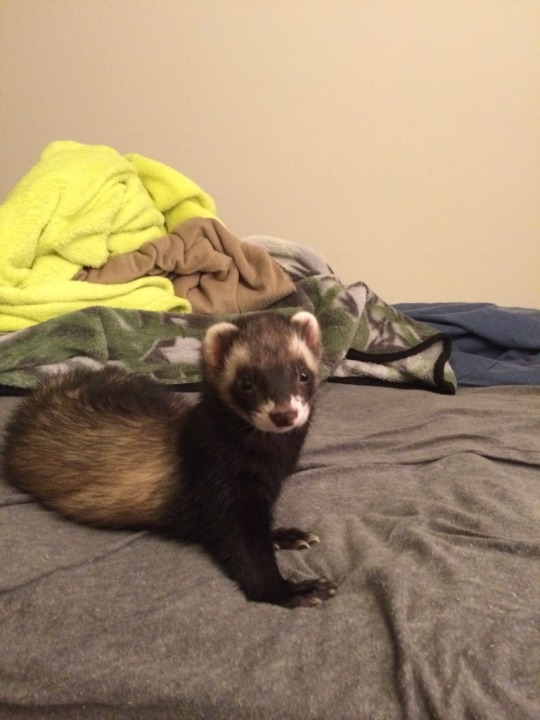
Yumir: Female Tarantula named Fang. She loves to scare Reiner with her. Yumir also takes such good care of Fang you'd almost think she loves her more than Historia. It's to the point where if she's at home, she'll take Fang out of her enclosure and just have her on her shoulder while she does stuff like chores or watch TV.
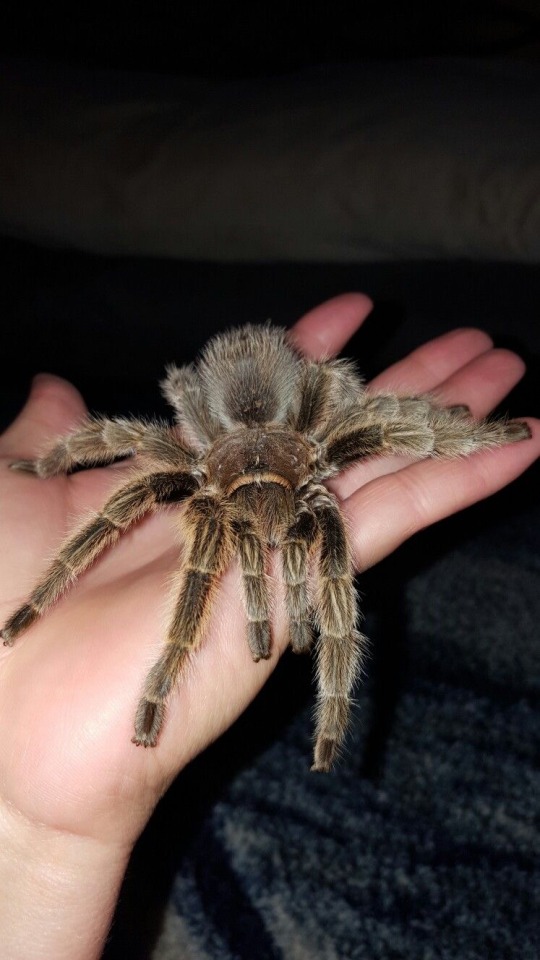
Historia: Female Beagle named Poppy. She dresses her up, and they watch TV together all the time. Sometimes they have "hype moments" where Historia hypes up Poppy by saying stuff like "LETS GO, WE CAN DO IT!!!" and they do it for like 10 min. Poppy is also those dogs that know every trick in the book. Historia has even taught her how to backflip and do hand stands. Poppy can also do a handstand and walk in a handstand.

Petra: Female Norwegin Forest Cat named Camellia. Petra's the type of person who walks her cat, but she loves it. Gives her cat super good food. Literally the happiest cat you will ever meet. Also the sweetest cat ever. Super playful and soooo soft.

Oluo: Male Irish Wolfhound named Captain. Loud as hell. Literally the most talkative dog you will ever meet. Super sweet dog, just very talkative. Also, if you put a bowl of food out in front of him he'll eat like Oluo has been starving him for months. Genital giant. His dog is a literal giant, is not even funny.
(man standing next to dog for size reference on how tall this damn dog is)
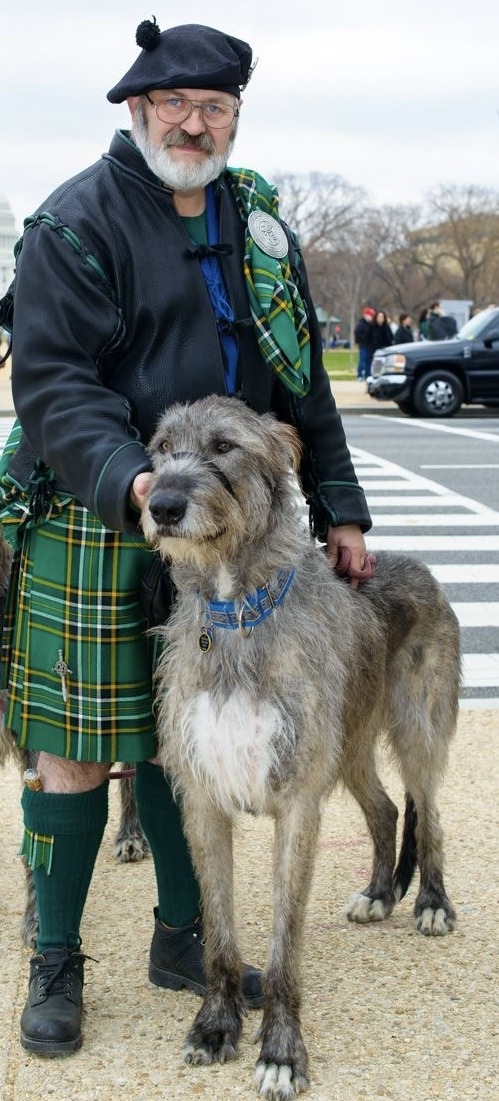
Gunther: Female Albino Ferret named Xiomara. When he was looking at ferrets, the people working there told him how Xiomara was turned down for adoption so many times the owner wanted to claim her as "unadoptable", and he was confused when he heard the reason was because of how she looked. But he thought the contrast of her red eyes to her white fur looked super cool, so he adopted her and named her Xiomara, and she's been his best friend ever since. He takes her everywhere is loves her so much, it's adorable.
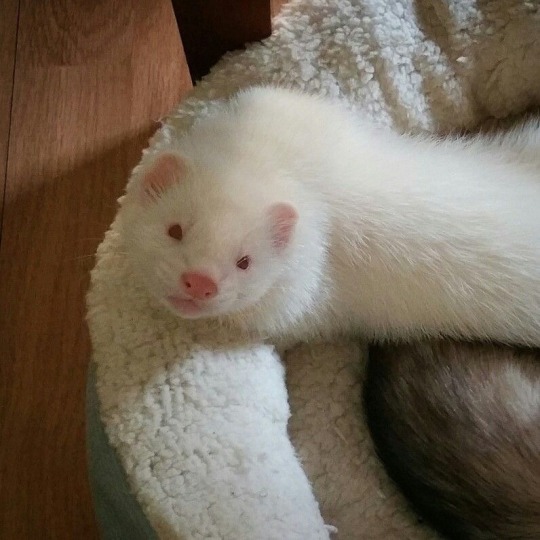
Eld: Female Duck Tolling Retriever named Penelope. She has total attachment issues. They're basically attached to each other. Eld is going to the bathroom? So is his dog. She also does so many tricks and is so polite. And she attends doggy daycare, and lets just say she may be the teacher's favorite.
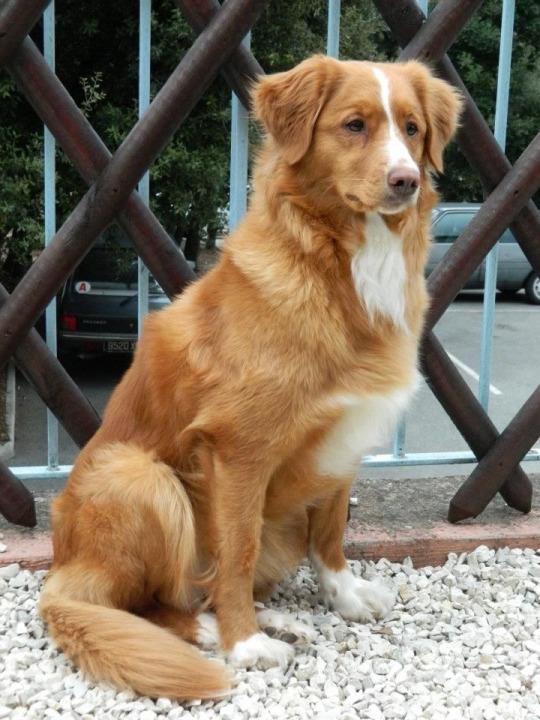
Nifa: Female hamster named Sunny. She's a total troublemaker. The food she's eating? Stole it right off Nifas plate. She eats clothes if you don't pay attention to her, she's escaped her cage, she almost drowned herself because Nifa fed her 2 minutes late. If your finger gets too close to her mouth, she will bite you.
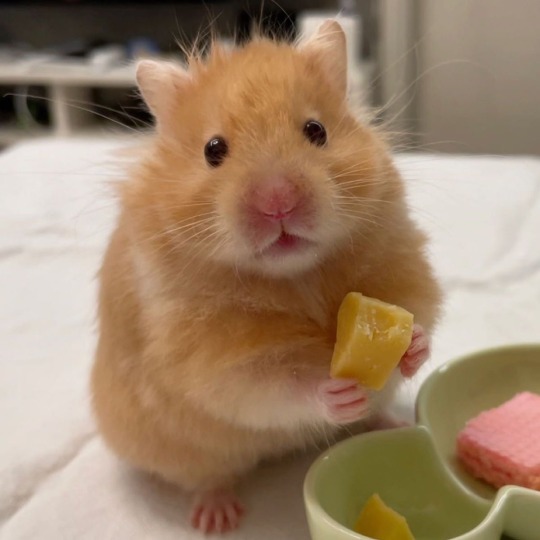
Abel: Male Brussels Griffin named Scrappy. Will eat ANYTHING. You left the toothpaste out? That's Scrappys toothpaste now. You forgot your shoes? NVM those are Scrappys shoes. Also wears dog shoes every time he goes out.
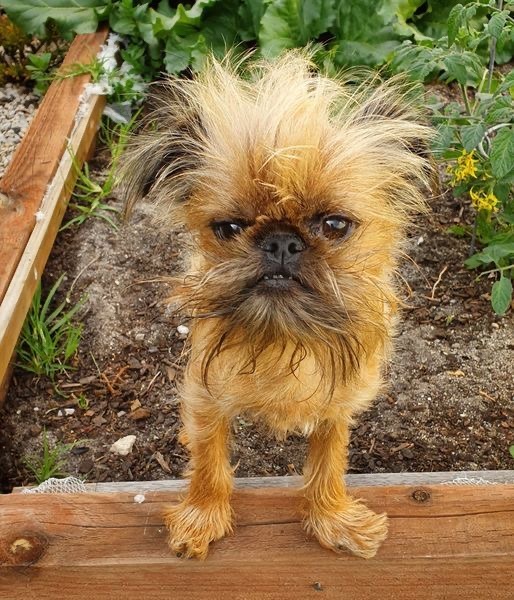
Keiji: Female Pointer named Coco. She is the sweetest dog ever. Super gentle, doesn't bite, doesn't scratch, not aggressive, while all the other dogs are outside play fighting Coco's right next to Keiji. Whether it's her laying on the floor, her laying next to him, or her laying on top of him, most of the time Coco is with Keiji. Sometimes he even puts her outside to play with the other dogs because he's so attached to him.
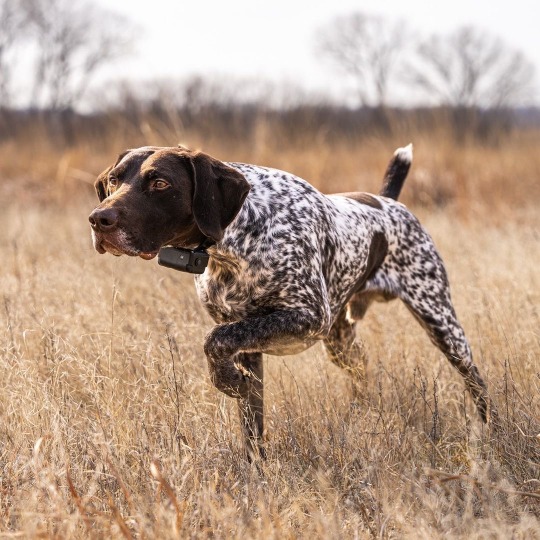
Tomas: Female Texas Heeler named Luna. She's also a super sweet dog. She's also very, very energetic. If you get up even for one second, she'll get so excited. Luna's one of those dogs that will not stop spinning in circles. And every time you see her, she's panting as if she just ran the longest dog marathon ever. If you ask Tomas what she's like when they get home, it's normally the same story how she just is so exhausted she can't do anything.
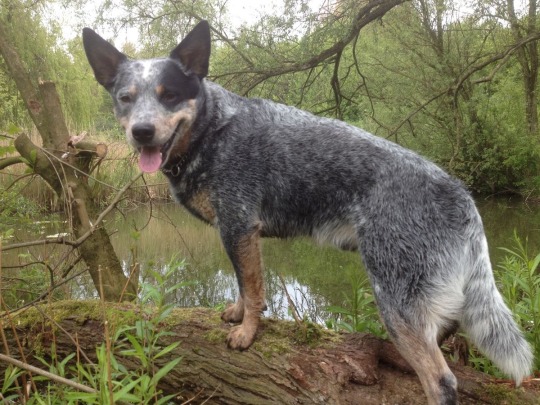
Nannaba: Female Ferret named Phoebe. Very very energetic and loves to do tricks. She will climb everything. Walls? Climb. Fence? Climb. Furniture? Clime. YOU? CLIMB. Loves cuddling so much, she gets pissed if you get up while she's asleep. Also eats hair. She even eats Nannabas hair, and she has pretty short hair. One time in the winter Miche was growing out a beard for a dare and Phoebe started eating it while he was staying the night at Nannabas.

Gelger: Male rat named Rocket. Rocket is the craziest laziest rat ever. Sometimes Gelger has to hand feed Rocket his food cause he's too tired to get up, then 5 min later he's running around all over the place and sliding everywhere. He also poops soooo much. Gelger even took him to the vet once because he got nervous that something was wrong with Rocket because of how often and how much he would poop. Turns out he just poops a lot. When they go to other peoples houses Gelger has to put Rocket in a diper because hes worried about him pooping everywhere.

Henning: Male Cane Corso named Butch. When he adopted Butch he wanted a Cane Corso that still had it's tail and who didn't have cropped ears. Butch is so scary when you first meet him, but then he becomes the most lovable dog ever. He gives the sloberist kisses and is always drooling, but that's ok. Super strong. He's knocked over the whole barbecue grill before.
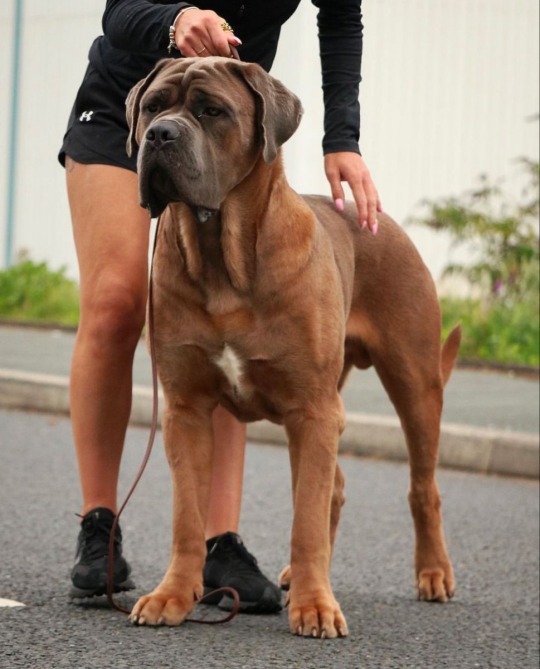
Lynne: Female Rabbit named Daisy. The sweetest bunny you will ever meet omg. She never gets in the way of anything and is even potty trained. She always shows off her tricks and is very proud of it. One time she even did a back flip but got scared when everyone cheered. Very unpridectible. One time it was getting late and everyone realized they haven't seen Daisy for a while so everyone was freaking out and when they checked outside Daise was sitting on top of an Opossum.
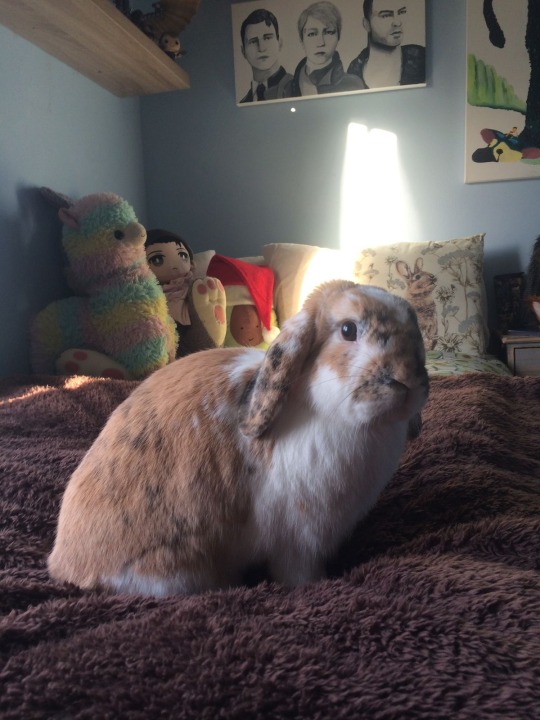
7 notes
·
View notes
Text
Best Pets for Home: Top 5 Pets and How to Choose the Right One

Finding the best pet for your home involves considering factors like space, time commitment, family dynamics, and personal preferences. Pets can bring joy, companionship, and responsibility to a household. Whether you're looking for a furry friend, a feathered companion, or a low-maintenance pet, there's something for everyone. In this article, we'll explore the top 5 pets for home and offer insights on how to choose the best one for your lifestyle.
1. Dogs
Dogs are often considered the ultimate companions for families and individuals alike. They are loyal, loving, and provide a sense of security. However, owning a dog requires time, effort, and patience.
Popular Breeds for Homes: Golden Retrievers, Labrador Retrievers, Beagles, and Poodles.
Behavior: Dogs are social animals that thrive on interaction and activity. They require regular exercise, mental stimulation, and companionship.
Weight: Varies widely by breed, ranging from 5 lbs (2 kg) for small breeds like Chihuahuas to 100 lbs (45 kg) for larger breeds like Great Danes.
Food: Dogs require a balanced diet of protein, vegetables, and grains. High-quality dry dog food is a good base, but some dogs may benefit from fresh or raw food diets.
Advantages: Loyal, protective, great companions, encourage exercise.
Disadvantages: Require a lot of attention, training, and regular exercise. Some breeds are prone to health issues.
2. Cats
Cats are independent, low-maintenance pets that are perfect for smaller homes or apartments. They can be affectionate without being overly demanding and don't require the same level of attention as dogs.
Popular Breeds for Homes: British Shorthair, Siamese, Persian, and Maine Coon.
Behavior: Cats are curious, playful, and generally independent. While some cats are very affectionate, others may prefer solitude.
Weight: Typically between 8-15 lbs (3.5-7 kg).
Food: High-protein, grain-free dry or wet food is recommended. Cats are obligate carnivores, meaning their diet should primarily consist of meat.
Advantages: Low maintenance, independent, ideal for small spaces.
Disadvantages: Can be aloof, may scratch furniture, litter box cleaning is required.
3. Fish
For those looking for a low-maintenance and visually pleasing pet, fish are an excellent choice. A well-maintained aquarium can add beauty to any room, and fish are quiet, peaceful pets that require minimal interaction.
Popular Species for Homes: Betta Fish, Goldfish, Guppies, and Neon Tetras.
Behavior: Fish are calming to watch and can be mesmerizing with their graceful movements. However, they do not offer the same level of interaction as other pets.
Weight: Varies depending on the species, but most common household fish are small and lightweight.
Food: Specialized fish flakes, pellets, or frozen foods based on the species.
Advantages: Low maintenance, aesthetically pleasing, quiet.
Disadvantages: Require regular water changes and tank maintenance, no physical interaction.
4. Birds
Birds can be wonderful pets, especially for those who enjoy animals with personality and intelligence. Birds range from low-maintenance species like parakeets to more demanding species like parrots.
Popular Species for Homes: Budgies (Parakeets), Cockatiels, Lovebirds, and African Grey Parrots.
Behavior: Birds are social and often form strong bonds with their owners. Some species can even mimic human speech and sounds.
Weight: Varies by species; small birds like budgies weigh around 1 oz (28 g), while larger parrots can weigh up to 3.5 lbs (1.5 kg).
Food: A balanced diet of seeds, fruits, vegetables, and specialized pellets is necessary to keep birds healthy.
Advantages: Intelligent, interactive, can be trained to talk or perform tricks.
Disadvantages: Can be noisy, require social interaction, and may become destructive if bored.
5. Rabbits
Rabbits are great pets for families or individuals who want a soft, furry friend that is relatively low maintenance. They are quiet, social animals that can be litter-trained and kept indoors or outdoors.
Popular Breeds for Homes: Holland Lop, Netherland Dwarf, Lionhead, and Flemish Giant.
Behavior: Rabbits are social animals that enjoy being around people. They can be litter-trained and love to hop around in open spaces.
Weight: Depending on the breed, rabbits can weigh anywhere from 2 lbs (1 kg) to 15 lbs (7 kg).
Food: A diet consisting mainly of hay, fresh vegetables, and rabbit pellets.
Advantages: Quiet, can be litter-trained, good for small spaces.
Disadvantages: Require regular grooming, need space to roam, can chew on furniture.
How to Choose the Best Pet for Your Home
Choosing the best pet depends on several factors:
Time Commitment: Some pets, like dogs, require a significant amount of time for training, exercise, and attention. If you have a busy schedule, consider low-maintenance pets like fish or cats.
Living Space: Consider how much space you have. Larger animals like dogs and rabbits need more space to move around, while fish and small birds can thrive in smaller areas.
Allergies: If you or a family member has allergies, hypoallergenic pets such as certain dog breeds (like poodles) or hairless cats may be a better option.
Family Dynamics: Pets like dogs can be great companions for children, while smaller pets like fish or birds may be more suited to families with older children who understand how to handle animals gently.
Budget: Some pets require more financial investment than others, not only in terms of initial costs but also in terms of ongoing care, food, and veterinary expenses.
Experience: First-time pet owners may find it easier to start with low-maintenance pets like fish or small birds, while more experienced owners may opt for dogs or rabbits.
Final Thoughts
Owning a pet is a rewarding experience that comes with responsibilities. Whether you choose a loyal dog, an independent cat, a peaceful fish, a chatty bird, or a soft rabbit, ensure that you are prepared to meet their physical and emotional needs. Researching the specific requirements of each species and breed will help you make the best decision for your home and lifestyle.
FAQs
What is the best pet for first-time owners? Cats and fish are excellent choices for first-time owners due to their relatively low maintenance needs compared to dogs.
Are rabbits good pets for small apartments? Yes, rabbits can be kept in small apartments as long as they have space to hop around and plenty of enrichment to prevent boredom.
What is the most low-maintenance pet? Fish are considered one of the most low-maintenance pets, as they require little interaction and only need regular tank cleaning and feeding.
Do birds require a lot of attention? Some species of birds, like parrots, require a significant amount of social interaction and attention, while smaller birds like budgies are more independent.
Can dogs be left alone during the day? Some dog breeds can be left alone for a few hours, but most dogs require companionship and exercise throughout the day. Consider hiring a dog walker if you have a busy schedule.
2 notes
·
View notes
Text
PARROTS FOR SALE ONLINE – HEALTHY EXOTIC BIRDS FOR SALE REPTILE STORE
PARROTS FOR SALE ONLINE
Live Parrots Pet Store is one of the largest Parrot Specie breeder reptile store and seller in the USA. We sell Parrots such as African Grey Parrots, Amazon Parrots, Macaw Parrots, Conure Parrots, Cockatoo Parrots, Pionus Parrots and Eclectus parrots for sale online. We are specialized in both hand raised baby Parrots and adult Parrots as well. Our pet store staff helps in the education of each customer and is here to assist any client that visits our pet store. We breed almost any parrot you can think of, from as small as parrotlet to as large as several species of Macaw. We want to be the #1 all Parrot pet store when anyone searches parrots for sale online and will work very hard to earn your business and support you in your ownership of your Parrot pet.
PARROTS FOR SALE – ALL LIVE AND HEALTHY PARROTS FOR SALE REPTILE STORE
We believe in weaning our baby birds based on their individual needs and rates of maturity. All baby parrots for sale online must get a good start in life, both nutritionally and psychologically. Each of our babies is given a hand-feeding formula that is best suited to their species and individual needs. They are given a variety of foods at an early age, which allows them to explore and experiment with different tastes and textures. Our babies are weaned onto a pelleted diet, various trail mix blends, fresh fruits and vegetables, cooked beans and rice, grains, breads, pastas, and nuts (for the Macaws & Conures).
BEST BIRD STORE ONLINE REPTILE STORE
Buy Parrots Online
We keep them in cages in our homes, but in their natural state, they are independent birds who can seek out water over hundreds of miles through pure instinct. We feed them seeds from a pet store, but they can find food in a wide variety of habitats. We give them plastic toys and mirrors to play with when in fact in the wild some have figured out how to use tools to communiparrote and attract mates. parrots for sale
#1 PARROT STORE ONLINE
Parrots For Sale Online
Welcome to Healthy Parrots For Sale Store. Your one stop online shop for the most adorable parrots you can find. We have a wide collection of these charming birds; we have several species available such as the amazon, african grey, electus, macaw etc. We also have parrot eggs for sale available on our store. All our parrots are super birds and in good health, vet checked and ready for adoption. They are properly trained and will make great home companions
Welcome To Our Parrot Pet Store – Healthy Parrots For Sale Online
The price of our Birds are very affordable every parrot lover can afford these birds. We are not out to make a profit but to find these birds the best home. The Live Parrots Shop has been breeding exotic birds since 1992 on their farm and specialize in importing and exporting birds from our Farms. Buy parrots for sale online here at floridareptiles.us
Keywords
parrots for sale, african grey parrots for sale, parrots for sale near me, parrots for sale uk,macaw parrots for sale uk, parrots for sale scotland, indian ringneck parrots for sale, baby parrots for sale, parrots for sale glasgow, parrots for sale in uk, pet parrots for sale, parrots for sale birmingham, parrots for sale london, african gray parrots for sale, grey parrots for sale, cheap african grey parrots for sale near me,talking parrots for sale near me, amazon parrots for sale uk, african grey parrots for sale scotland, parrots for sale manchester, talking parrots for sale uk, african grey parrots for sale uk, macaw parrots for sale, parrots for sale liverpool, parrots for sale sheffield, birds parrots for sale, parrot for sale, african grey parrot for sale, african grey parrot for sale uk, parrot for sale uk, talking parrot for sale, amazon parrot for sale, ringneck parrot for sale, macaw parrot for sale, alexandrine parrot for sale, parrot for sale glasgow, quaker parrot for sale, macaw parrot for sale uk, parrot for sale near me, electus parrot for sale, pet parrot for sale, talking parrot for sale uk, gray african parrot for sale, african gray parrot for sale, eclectus parrot for sale, grey parrot for sale, amazon parrot for sale uk, conure parrot for sale, parrot for sale liverpool, african grey parrot for sale scotland
Lizards For Sale
Lizards for Sale Reptile store
There are roughly 19 species of lizards that are native to Florida reptiles store in the geographically diverse state of the USA. Based on physical traits and appearance, four families of lizards are recognized in Florida. Reptiles of the family Crotaphytidae is typically recognized by their huge bodies and protracted tails. The Phrynosomatidae family, pet reptiles for sale in contrast, is distinguished by its diminutive size. The sizes of the third and fourth families, Scincidae and Teiidae, are not used to classify them but rather their morphologies.
Teiidae is very different from the other species. They are known as whiptails because of their long, sleek tails, bedding reptile cleaning and maintenance and their tongues are frequently forked. The lizard species of the Scincidae, however, best online reptile store have distinctly cylindrical bodies and very short limbs. Currently, you may purchase Florida lizards online from www.floridareptiles.us and benefit from our overnight shipping options. We at Florida Reptiles sell a variety of lizards, but some of the most popular ones include Abino iguanas, Yellow iguanas, Parsons Chameleons, and Grand Cayman Blue Iguanas, emerald tree boa for sale.
Snakes For Sale
Among many known reptiles of Florida, snakes are found in abundance. Around 30 species of snakes have been discovered throughout the state. While most of them are not poisonous, bidding starts on dec pm, Rattlesnake is a severely poisonous Florida reptile. There is no need for fear of encountering reptiles in Florida and visiting the wildlife with safety precautions well understood. pet reptile for sale
People find Snakes as one of the scariest reptiles; however, they play a great role in maintaining the ecosystem balance. We are reptile store have attempted to emulate good principles to take care of reptiles for sale. We have a wide selection of Florida snakes for sale. Florida snakes can be purchased online from us, and we guarantee safe and timely delivery. Some of the most frequently purchased Florida snakes include black devil boas, reptiles for sale including , baby red tail boas, pied ball pythons, underground reptiles and adult black green tree pythons. You can buy Florida snakes online in the United States from us and save money on different species of Florida snakes. captive bred reptiles for sale
Turtles For Sale
Turtles are typically regarded as being harmless among the terrifying and venomous reptiles of Florida. Among the native reptiles of Florida are five different species of turtle. The Western Painted Turtle, Snapping Turtle, Spiny Softshell Turtle, and Yellow Mud Turtle are the four aquatic and wetland species. The only species found on land is an elaborate box turtle. The largest of the five species, the spiny softshell, reptile shop near montclair nj is primarily found in eastern Colorado. Ornate box turtles have recently been categorized as threatened due to habitat loss.
Every week, they rescue and take in reptiles and amphibians in Florida before placing them up for adoption in a secure environment. Some of the most well-known Florida turtle species available for purchase online include the Spotted turtle, Baby Spotted turtles, Albino Red Ear Slider turtle, Baby Asian Yellow Pond turtle, and Baby Desert Ornate Box turtle. In the USA and Europe, Florida turtles can be purchased.
Every week, they rescue and take in reptiles and amphibians in Florida before placing them up for adoption in a secure environment. Some of the most well-known Florida turtle species available for purchase online include the Spotted turtle, Baby Spotted turtles, subsrate and bedding reptile cleaning , Albino Red Ear Slider turtle, Baby Asian Yellow Pond turtle, and Baby Desert Ornate Box turtle. In the USA and Europe, Florida turtles can be purchased.
Tortoises For Sale
Unlike turtles, tortoises are land creatures. Like turtles, tortoises are shielded from predators and the elements by a hard shell. With an estimated lifespan of 200,000 years, Florida tortoises are regarded to be the longest-living land animals in the entire world. Some of the tortoise species available for purchase are adult pancake tortoises, reptile shops in edison nj , young Aldabra tortoises, young Burmese black mountain tortoises, young big south African leopard tortoises, young Greek tortoises, young hypo Sulcata tortoises, and young elongated tortoises.
These and many other varieties of tortoise are available for purchase from us online.
With only a few mouse clicks, treats reptile subsrate and bedding captive bred reptiles for sale ,you may make the finest tortoise buy of your life with next-day delivery and enormous savings! Our enormous clientele is dispersed throughout the USA and Europe. Give us a chance to provide you with the best reptiles for sale online by ordering your Florida tortoise and other reptiles from the United States.
Are there rattlesnakes in Florida Reptile store?
Snakes are the most abundant species among all Florida reptiles. There are around thirty (30) snakes in Florida , out of which only three (03) are threats to human life. All three of these are rattlesnakes, and they come from the Viperidae family.
Their common names are Prairie Rattlesnake, Midget Faded Rattlesnake, and Massasauga. All three rattlesnakes are different in physical appearance and various characteristics; however, they possess a few mutual characteristics that help identify them. As the name suggests, the end of the tails look rattle-like, and they have triangle-shaped heads. The eyes are vertical in shape, and all have thick bodies.
Prairie Rattlesnake is the most common type of rattlesnake species. They are the largest among the other rattlesnakes and are known as Western Rattlesnakes and Great Plain Snakes. Among the snakes found in Colorado Springs, Prairie Rattlesnake is the only rattlesnake found there.
Midget-faded rattlesnakes are found in a limited number in Florida . Their only natural habitat is in the Green River and Florida River basins. Midget-faded rattlesnakes are generally called faded rattlesnakes due to their color and size. They have bodies the shade of pink and yellow with red scales and have darker markings all over, which fade as they age.
In addition to these venomous reptiles of Florida , two species of Massasauga Rattlesnake are also found in Southeastern Florida . These snakes include western massasaugas and desert massasaugas.
Snakes in Southeaster
n Florida inhabit relatively dry areas such as rocky terrains and dry grasslands. They are the shortest among the Florida rattlesnakes and can grow up to 20 inches in total. The color and appearance of both the snakes are pretty similar, with greyish and dull base color and dark patches all over the body. We sell a wide variety of Florida snakes online, and you can buy them directly from our live reptiles store.
Which species of reptiles and amphibians are there in Florida reptile store?
Florida is home to many native reptiles and amphibians. There are around 19 species of amphibians and around 58 species of reptiles currently known in the state.
Among the species of amphibians in Florida, the Western Tiger salamander is the only salamander species. It is well-recognized as it was designated as Colorado’s state symbol in 2012. They live around water bodies such as damp areas in forests and pine barrens.
Florida Tiger Salamander is a nocturnal species and can grow up to 14 inches. They eat everything from small insects to earthworms. Other amphibians in Florida include anurans, i.e., frogs and toads. Some of the frog species found commonly in Florida are American Bullfrog, Northern Leopard frog, Canyon Tree frog, etc. American Bullfrog is known as the biggest frog among these species. Florida toads include Great Plain Toad, Red Spotted Toad, etc.
Among the reptiles in Florida , lizards and snakes are found in abundance. There are around nineteen (19) species of lizards and thirty (30) species of snakes found across the Colorado state.
Lizards in Florida are categorically divided into four families. The list includes Texas Horned Lizard, Round-tail Horned Lizard, Tree Lizard, The Eastern Fence Lizard, etc. The most well-known species of snake found in the state is Rattlesnake.
Florida turtles and tortoises are found in the eastern part of Florida . Four out of five species found in the state are aquatic, and only one species, Ornate Box Turtle, is terrestrial. This terrestrial species has been marked as threatened species due to habitat loss in recent years. Contact us right away to take advantage of our special online discounts on our Florida reptiles store.
What kind of lizards are there in Florida Reptile store?
Among the Florida mountain reptiles, lizards are present in the majority population. There are around nineteen (19) species of lizards in Florida reptile store . These species are categorized into four (04) families on the basis of their size and shape.
The first family, called Family Crotaphytidae, consists of two species. Common names for these Florida reptiles are Collared Lizard and Longnose Leopard Lizard. The characteristics that define this family are large bodies with huge heads and long limbs.
The second family is Family Phrynosomatidae. There are nine species of lizards in this family, What is the best website to buy reptiles? and they are characterized based on their relatively small bodies. The common names are Texas Horned Lizards, Eastern Fence Lizard, Side-Blotched Lizard, Short-Horned Lizard, Desert Spiny Lizard, Tree Lizard, Lesser Earless Lizard, Sagebrush Lizard, and Round-tail Horned Lizard.
https://floridareptiles.us/wp-content/uploads/2023/05/A3.jpeg
https://floridareptiles.us/wp-content/uploads/2023/01/reptiles.jpg
Where Do We Ship Reptiles?
We ship Florida reptile Store in the United States and Europe. Our customer base stretches from the United States to Canada, the UK, and all of Europe. You can buy Florida reptiles online from our online store to take advantage of our special discounts for online customers. We have a diverse clientele that ranges from the United States to Europe. The Abino iguana, Parsons Chameleon, Black devil boa, Yellow iguana, reptile store near me , Grand Cayman blue iguana, Surname boa, Spotted turtle, Baby Spotted turtle, geckos for sale and Baby red tail boa is among our most popularly purchased Florida exotic pet reptiles.
2 notes
·
View notes
Text
A small tip of perspective for those that struggle to navigate their own needs but are animal lovers / pet parents, try to approach yourself and your needs (and for systems, parts and system needs) as if you were trying to understand a specific needs profile of a breed / version of the pet aren't the most aware of and don't have the ability to look up. I don't know how well this applies to non-dog/bird species, but largely in birds and dogs, there is a large variety of needs depending on the species / breed you get and even within species and breeds. What one needs is going to be drastically different from the other
What sort of enrichment is necessary to make this animal happy and able to live to the most of their natural behavioral capabilities? What sort of social exposure and activity does this animal need to meet their needs and make sure they have an enriched life? What have they been eating? Has it been one same meal over and over again beyond the point of enjoying it still? When was the last time things were changed up? When was the last time they were bathed or given the opportunity to see something new?
Largely our system is a bird, and like any bird, you really can't keep them in a cage all day so we have system rules that we should try to leave the house every day for at least an hour and preferably go somewhere that has something to look at that we haven't done in a while. We call this the "Fly the Coop" time and its just a general welfare rule. Treat the bird in our brain like the bird it is and give it it's "outside time" because not giving a bird that would be very bad for them.
We also are a parrot to be specific so it is very important to give us something to work on, a puzzle to figure out, and active mental stimuli and enrichment. We have a very high curious and drive to learn and figure things out, so like any particularly curious parrot, its important to lay out a number of activities, problems, and puzzles for us to figure out and build on - as a result it is important for us to always have a list of skills and problem solving and creation related things availible for us to engage with.
We are also very social but we aren't so much the active cuddler (save for specific parts) and active affectionate type, so much as we are more around the ways of an African Grey or Cockatiel that needs passive company and benefits from a mutually engaged environment; so it is important to have people (or birds for our case as it fills the need) around us doing their own thing and even better if they are also engaged as it lets us relax in an engaged state. Mutual engagement is one of the solid bonding activities. Additionally, we fill our social needs often in the form of social bathing, social eating, and general social cleaning / preening, so when possible, its good to put ourselves in environments where others are doing similar and/or bring our close people and our birds into those activities with us.
Routine is highly important to us as well which again is a good parallel to parrots so we keep that in mind.
With the general frame work, we can really easily apply a mental check list / needs list by largely applying a "welfare and needs" marker for a "non-existant parrot" and apply that to ourselves so rather than trying to figure out what "We Need", we can just make sure we have made sure the parrot need profile in our head has been met.
Largely following the general caresheet for the specific type of parrot that we are has honestly led to a lot better self care and day to day management of our mental, psychological, and physical health so its a perspective thing I do recommend.
11 notes
·
View notes
Text
Exotic animals
Exotic animals are unique and fascinating creatures that are often sought after as pets for their rarity, beauty, or unique characteristics. The term "exotic" generally refers to animals that are not native to a particular region, and can range from reptiles and amphibians to birds and mammals. If you're considering purchasing or adopting an exotic animal, it’s essential to understand the responsibilities involved, their specific care requirements, and the ethical implications.
At animalssale.com, you might come across a wide variety of exotic animals that are available for purchase, but it’s crucial to approach such purchases carefully. Before buying an exotic animal, it’s important to consider the laws, regulations, and ethical concerns surrounding their ownership. Here’s a guide to some popular exotic animals and what to know about them.
1. Exotic Birds
Exotic birds are often a favorite among pet enthusiasts due to their vibrant colors, intelligence, and social nature. However, they can also be quite demanding and require special care.
Popular Exotic Bird Species:
Macaws: These large, colorful parrots are known for their striking plumage and strong personalities. Macaws can live for 50 years or more and require a lot of attention, socialization, and space to thrive.
Cockatoos: Cockatoos are affectionate and social birds that can become very attached to their owners. They are highly vocal and may not be suitable for all households due to their loud calls.
African Grey Parrots: Famous for their exceptional intelligence and ability to mimic human speech, African Greys are great companions but require a lot of mental stimulation and interaction.
Considerations for Bird Ownership:
Diet: Exotic birds often have specialized diets that need to be carefully managed to ensure their health.
Space: Birds like macaws and cockatoos need large cages and regular out-of-cage time for exercise and social interaction.
Socialization: Birds are highly social creatures and require constant companionship to prevent loneliness and behavioral issues.
2. Reptiles
Reptiles are fascinating animals that can make great pets due to their relatively low maintenance. However, many species have specific habitat needs, so research is essential before getting one.
Popular Exotic Reptiles:
Ball Pythons: These non-venomous snakes are known for their docile nature, making them one of the most popular snake species for beginner reptile enthusiasts.
Bearded Dragons: These reptiles are friendly, easy to handle, and have a calm demeanor, making them a great choice for first-time reptile owners.
Chameleons: Chameleons are famous for their ability to change color and their long, prehensile tails. However, they require a very specific environment with the right temperature, humidity, and lighting.
Considerations for Reptile Ownership:
Habitat: Most reptiles require specialized enclosures, heat lamps, and humidity levels to mimic their natural environments.
Diet: Different reptiles have varied dietary needs. Some may require live prey, while others are herbivores.
Handling: Some reptiles can be delicate and may not enjoy handling. It’s important to respect their space and only interact with them when necessary.
3. Exotic Mammals
Exotic mammals can make interesting and unique pets, but they are generally more complex to care for than common household pets like cats or dogs. Some species are illegal to own in certain areas, so always check local regulations before acquiring one.
Popular Exotic Mammals:
Sugar Gliders: These small, nocturnal marsupials are known for their gliding abilities and social nature. They require companionship and can bond closely with their owners.
Capuchin Monkeys: Known for their high intelligence, capuchin monkeys are playful and can be trained to perform various tasks. However, they require a lot of attention, stimulation, and can be difficult to care for long-term.
Fennec Foxes: Fennec foxes are small desert-dwelling mammals known for their large ears. They are intelligent and playful but can be noisy and require a lot of exercise and mental stimulation.
Considerations for Mammal Ownership:
Socialization: Many exotic mammals are social animals and require companionship. Sugar gliders, for example, should not be kept alone as they thrive in pairs or groups.
Diet: Exotic mammals often require specific diets tailored to their species. Some may need special vitamins or fresh food, and it’s important to research the correct nutrition for each species.
Space: Many exotic mammals, like monkeys or foxes, require a significant amount of space to roam and play. This can be challenging for pet owners with limited living space.
4. Exotic Amphibians
Amphibians are fascinating creatures that can thrive in well-maintained habitats, making them great pets for reptile and amphibian enthusiasts.
Popular Exotic Amphibians:
Axolotls: These Mexican salamanders are known for their ability to regenerate limbs and retain juvenile features throughout their life. They require cool, clean water and a specific environment to thrive.
Poison Dart Frogs: Known for their vibrant colors, poison dart frogs are small, but they require a carefully controlled environment with the right humidity and temperature.
Tree Frogs: These frogs are small and come in a variety of colors. They can live in terrariums with the right humidity and temperature, making them relatively easy to care for.
Considerations for Amphibian Ownership:
Aquatic vs. Terrestrial: Some amphibians, like axolotls, live in water, while others, like tree frogs, live on land. Make sure to provide the proper environment for the species.
Humidity and Temperature: Amphibians are sensitive to changes in temperature and humidity. It's essential to monitor these conditions closely and provide the right setup for your pet.
5. Ethical Considerations and Regulations
When purchasing an exotic animal, it’s important to be aware of the ethical implications and legal restrictions. Many species of exotic animals are protected by law due to concerns about conservation and animal welfare. Some species are illegal to own in certain states or regions due to concerns over environmental impact and public safety.
Things to Keep in Mind:
Wildlife Conservation: Many exotic animals are endangered, and their capture and trade can harm wild populations. Consider adopting an exotic animal from a rescue organization instead of buying one from a breeder.
Local Laws: Some areas have strict laws regarding the ownership of exotic animals. Make sure to check your local and state regulations before purchasing.
Long-Term Commitment: Exotic animals often have specific care requirements and can live for many years. Ensure that you’re prepared for the long-term commitment of owning an exotic pet.
Conclusion
Exotic animals can make unique and fascinating pets, but they require specialized care and attention. Whether you’re considering an exotic bird, reptile, mammal, or amphibian, it’s essential to research the species thoroughly and understand the responsibilities involved in caring for them. Always check local laws and regulations regarding the ownership of exotic animals and consider adopting from rescue organizations to give these creatures a loving home.
If you are considering acquiring an exotic pet, websites like animalssale.com may have listings for different species, but always prioritize responsible ownership and ethical treatment of animals.
0 notes
Text
Do African Grey Parrots Dream?
Ever wondered if African Grey Parrots dream? Discover the science, behavior, and adorable quirks behind your parrot's sleep and possible dream adventures!
#african grey lifespan#africangrey#african grey parrot care#cute birds#african grey behavior#tiktokparrot#african grey#african grey parrot#african grey parrot lifespan in captivity#buying an african grey parrot#African Grey dreams curiosity#african grey Intelligence#african grey life#african grey Memory#African Grey night behavior#african grey parrot behavior#African Grey Parrot Bonding#African Grey Parrot dreams#African Grey Parrot Health#African Grey Parrot night routine#African Grey Parrot Personality#African Grey Parrot relaxation#african grey parrot sleeping#African Grey parrot sounds#african grey parrot website#African Grey Parrots#african grey sleep#African Grey sleep cycle#African Grey sleep environment#african grey sleep noise
0 notes
Text
Discovering the Wonders of Blue Bird Pet Shop
Blue Bird Pet Shop is the ideal location for pet owners looking for a fun and trustworthy place to find their next furry, feathery, or scaly friend. This store is a sanctuary for all pet lovers and is well-known for its wide selection of pets and exceptional customer care.
Overview of Blue Bird Pet Store
For animal lovers, Blue Bird Pet Shop is more than simply a store—it's an experience. It has established itself as a reliable brand for high-quality pets and pet care items after years of devoted service.
An Overview of Blue Bird Pet Shop's Past
Built on a love of animals and a commitment to offering morally and healthily sound pet solutions, Blue Bird Pet Shop began as a modest family-run enterprise. It gained the affection and allegiance of its clients by growing into a full-fledged pet care facility over time.
Why It Is Unique in the Pet Care Sector
What is special about Blue Bird? It's their dedication to thorough pet care, client education, and ethical pet procurement. They encourage safe pet ownership in addition to selling pets.
A Variety of Gorgeous Birds
The enormous assortment of birds at Blue Bird Pet Shop will excite bird lovers. This store offers options for bird owners of all skill levels, ranging from common species to uncommon exotics.
Available Exotic Bird Species
A gorgeous assortment of exotic birds is available at Blue Bird, including:
Finches, canaries, and parrots (African greys, macaws, and cockatoos)
Lady Gouldian finches and blue-crowned conures are rare breeds.
Detailed Instructions for Bird Owners
Taking care of a bird involves knowledge and attention. Blue Bird offers advice on how to properly set up and clean cages.
Suggestions for a balanced diet
Mental stimulation and social interaction
Little Animals and More
In addition to birds, Blue Bird Pet Shop provides aquatic creatures, reptiles, and small animals for all animal lovers.
Guinea Pigs, Hamsters, and Rabbits
The store sells a range of small mammals for people who love fluffy companions, such as:
Holland and Mini Rex rabbits A lup
Hamsters: dwarf and Syrian
Guinea Pigs: Peruvian and American
Blue Bird's Aquatic Life
Aquarists can also find unusual aquatic plants and colorful tropical fish at Blue Bird. Among their choices are:
Angelfish, guppies, and betta are freshwater fish.
Saltwater Fish: Tangs and Clownfish
Aquascaping Supplies and Tanks
Amphibians and Reptiles for Enthusiasts
If reptiles are your thing, Blue Bird has:
Snakes: Ball pythons and corn snakes
Turtles: Sliders with red eyes
Geckos: Crested and Leopard Geckos
Superior Pet Supplies
Excellent pet products are essential to any pet store experience. Everything a pet may possibly require for a healthy existence is available at Blue Bird Pet Shop.
Superior Cuisine and Sweets
Mixtures of organic bird seeds
High-quality foods for cats and dogs
Reptile pellets with a balanced nutritional value
All Pet Accessories and Toys
Chew toys for small mammals
Structures that climb for reptiles
Interactive parrot toys
Grooming and Health Products
Treatments for ticks and fleas
Clippers for nails and grooming supplies
Vitamins and supplements
Professional Guidance and Assistance
Blue Bird serves as a community center for pet care education in addition to being a store.
Pet consultations in-store
For advice on pet care, including appropriate diet and habitat setting, knowledgeable staff members offer in-person consultations.
Workshops for Pet Owners at No Cost
Workshops on subjects including basic bird training methods are regularly held at the store.
Setting up a reptile habitat correctly
Handling and caring for small mammals
Social and Moral Behaviors
Blue Bird ensures the wellbeing of all pets since it takes its ethical obligations seriously.
Dedication to Ethical Purchasing
In order to guarantee that pets are healthy and responsibly sourced, the store exclusively works with respectable breeders and certified suppliers.
Blue Bird's Contribution to Animal Welfare
They actively support programs pertaining to animal welfare, such as:
supporting adoption-related events in the community
Collaborating with animal shelters
Public education regarding responsible pet keeping
Client Testimonials and Experiences
Blue Bird Pet Shop's outstanding customer service has helped it develop a devoted clientele.
Testimonials from Contented Pet Owners
Consumers frequently share touching tales like:
A rehabilitated parrot flourishing in a new habitat
Families want to get their kids the ideal first pet
What Blue Bird's Customers Love Most
Tailored assistance
Moral behavior
Various pet possibilities
Blue Bird Pet Shop: Why Choose It?
Blue Bird Pet Shop is the preferred location for pet owners for a number of reasons.
Competitive Rates
The cost of their pets and goods is reasonable without sacrificing quality.
Tailored Customer Support
To guarantee a satisfying experience, the staff takes the time to instruct each client on pet care.
A dedication to the well-being and health of pets
Before being offered for adoption, each creature is carefully examined for health and wellbeing.
Participating in Social Media Sites
For updates, pet care advice, and exclusive deals, follow them on Facebook, Instagram, and YouTube.
In conclusion
More than just a pet shop, Blue Bird Pet Shop is a community that genuinely cares about animals and their welfare. Blue Bird provides great service with a heart, whether you're looking for a new pet, high-quality supplies, or knowledgeable guidance. Come see the difference in morally sound, caring pet care now.
FAQs About Blue Bird Pet Shop
1. What types of pets are available at Blue Bird Pet Shop?Blue Bird Pet Shop offers a wide variety of pets, including exotic birds, small mammals, reptiles, amphibians, and aquatic species.
2. Does Blue Bird Pet Shop offer pet care products?Yes, they provide a comprehensive range of products, including premium pet food, toys, grooming tools, and health supplements for all pets.
3. Are the pets ethically sourced?Absolutely! Blue Bird prioritizes ethical sourcing and works only with certified breeders and suppliers to ensure pet welfare.
4. Can I get expert advice on pet care?Yes, the shop offers free in-store consultations and workshops to educate pet owners on responsible care practices.
5. Does Blue Bird Pet Shop have an online store?Yes, they offer an online platform where you can browse and purchase pet supplies with convenient home delivery options.
0 notes
Text
Yellow Sided Green Cheek Conure

All About the Yellow-Sided Green Cheek Conure: A Colorful and Loving Companion Introduction The Yellow-Sided Green Cheek Conure, also known simply as the Yellow-Sided Conure, is a stunning parrot species renowned for its vibrant plumage and affectionate personality. As a member of the conure family, these small to medium-sized parrots have become increasingly popular among bird enthusiasts and pet owners. They are adored for their playful nature, intelligence, and the strong bond they often form with their human companions. This article will delve into the captivating world of the Yellow-Sided Green Cheek Conure, exploring its characteristics, care requirements, and why it makes a delightful pet. Body
Characteristics and Appearance The Yellow-Sided Green Cheek Conure is a subspecies of the Green Cheek Conure (Pyrrhura molinae), native to the forests of South America, particularly in Brazil, Bolivia, Paraguay, and Argentina. These birds are relatively small, measuring about 10 inches in length, including their tail, and weighing between 60 to 80 grams. What sets the Yellow-Sided variety apart is its distinctive plumage. Unlike the standard Green Cheek Conure, which has a mostly green body with a grey head, the Yellow-Sided Conure features a bright yellow hue on its chest, which can range from a light lemon shade to a deeper golden yellow. This vibrant color contrasts beautifully with the red patches on their belly and the rich green feathers covering most of their body. Their cheeks are a pale yellow or whitish color, and they have a dark grey beak with a playful expression in their dark, intelligent eyes. This combination of colors makes them one of the most visually striking members of the conure family.
Personality and Temperament Yellow-Sided Green Cheek Conures are known for their affectionate and playful demeanor. They are social creatures that thrive on interaction and enjoy spending time with their human caregivers. These birds are curious and energetic, often engaging in playful antics like hanging upside down from their perches or playing with toys. Their inquisitive nature means they love exploring their environment and can be quite mischievous if left unattended for too long. Unlike some other parrot species, Green Cheek Conures, including the Yellow-Sided variety, are relatively quiet. While they do have the ability to mimic sounds and words, they are not as loud or vocal as larger parrot species, such as African Greys or Cockatoos. This makes them a great choice for apartment dwellers or those who prefer a quieter pet. These birds are also highly intelligent, which makes them quick learners. They can be taught a variety of tricks, from simple commands like “step up” to more complex behaviors such as fetching objects or dancing. They have a reputation for forming deep bonds with their owners, often displaying affection through cuddling, head bobbing, and gentle nibbling. However, they can become possessive or territorial if not properly socialized, so early and consistent training is important.
Care Requirements Owning a Yellow-Sided Green Cheek Conure is a commitment that requires time, effort, and dedication. These birds can live up to 25 to 30 years in captivity with proper care, making them a long-term companion. Below are some essential care tips: • Diet: A balanced diet is crucial for the health of a Yellow-Sided Green Cheek Conure. Their diet should consist of high-quality pellet food designed for conures, supplemented with fresh fruits, vegetables, and occasional seeds or nuts. Fruits like apples, bananas, and berries, along with vegetables such as carrots, spinach, and bell peppers, are great choices. Fresh water should always be available, and foods high in fat, salt, or sugar should be avoided. • Housing: A spacious cage is essential to accommodate their active nature. The cage should be at least 24x24x24 inches, with bar spacing of about ½ to ⅝ inches to prevent escape or injury. Multiple perches of varying diameters and textures will help keep their feet healthy. The cage should also include a variety of toys for mental stimulation and to prevent boredom. • Social Interaction and Mental Stimulation: Yellow-Sided Green Cheek Conures are highly social and require daily interaction. Regular playtime outside the cage, at least a few hours a day, is essential for their mental and emotional well-being. Without adequate attention, they can become bored or develop behavioral issues, such as feather plucking or excessive screeching. Rotating toys regularly, teaching new tricks, or providing puzzle toys can help keep them mentally stimulated. • Health Care: Regular veterinary check-ups are vital for detecting any potential health issues early. Like other conures, they can be prone to certain illnesses such as Psittacosis, Pacheco’s disease, and Proventricular Dilatation Disease (PDD). Observing for any signs of illness, such as changes in droppings, appetite, or behavior, and consulting with an avian vet if needed is important.
Training and Socialization Training a Yellow-Sided Green Cheek Conure can be a rewarding experience for both the bird and the owner. These birds respond well to positive reinforcement techniques, such as treats and praise. Early training should focus on basic commands, like stepping up onto your hand or returning to their perch. As they become more comfortable and confident, more complex tricks can be introduced. Socialization is equally important. Introducing your conure to different people, environments, and situations will help them become well-adjusted and less prone to fear or aggression. Start socialization early, and make sure experiences are positive and stress-free. Regular handling and gentle interaction will help build trust and strengthen the bond between you and your feathered friend.
Why Choose a Yellow-Sided Green Cheek Conure as a Pet? Yellow-Sided Green Cheek Conures make excellent pets for several reasons. Their compact size makes them suitable for smaller living spaces, while their relatively quiet nature means they are less likely to disturb neighbors or family members. They are incredibly affectionate and enjoy cuddling and playing with their owners, which makes them a great choice for someone looking for a pet that can offer companionship and entertainment. Furthermore, their intelligence and eagerness to learn new tricks and behaviors make them highly engaging pets. With consistent training and socialization, they can become well-mannered members of the household, capable of forming strong, loving bonds with their human caregivers. Conclusion The Yellow-Sided Green Cheek Conure is a vibrant, playful, and affectionate bird that can bring joy and companionship to any household. Their colorful plumage, intelligent personality, and relatively low noise level make them an ideal pet for both first-time bird owners and experienced avian enthusiasts. However, they require a commitment of time, attention, and proper care to ensure they remain happy and healthy throughout their lives. If you’re looking for a small parrot with a big personality, the Yellow-Sided Green Cheek Conure might just be the perfect companion for you.
#greencheek #greencheekconure #conure #conuresofinstagram #parrotsofinstagram #birdsofinstagram #conures #bird #parrots #parrot #birds #tampa #florida #tampabay #orlando #miami #tampaflorida #stpete #clearwater #tampafl #southtampa #explorepage #jacksonville
1 note
·
View note
Text
Understanding Parrots: Behavior, Habits, and Care
Parrots are among the most captivating and intelligent birds in the animal kingdom. Their vibrant plumage, remarkable vocal abilities, and playful personalities make them a favorite among pet enthusiasts and bird watchers alike. This article delves into the world of parrots, exploring their behavior, natural habitats, and the care they require both in the wild and as pets.
The Fascinating World of Parrots
Parrots belong to the family Psittacidae, which encompasses around 400 species of colorful, tropical birds. These species are spread across various continents, including South America, Africa, Australia, and parts of Asia. The diversity within this family is astonishing, with variations in size, color, and vocal capabilities.
Physical Characteristics
One of the most striking features of parrots is their vibrant plumage. Colors range from brilliant greens and blues to vibrant reds and yellows. This diversity in color helps parrots blend into their natural habitats or stand out, depending on their needs. Their zygodactyl feet, which have two toes pointing forward and two backward, are adapted for gripping branches and handling food. Additionally, parrots possess a strong, curved beak ideal for cracking nuts and seeds, as well as manipulating objects.
Behavior and Social Structure
Parrots are known for their intelligence and complex social behaviors. In the wild, they live in flocks that can range from small family units to large groups of hundreds. These flocks provide social interaction, protection from predators, and assistance in finding food.
Social bonds are crucial for parrots, and their communication skills are particularly impressive. Many species are capable of mimicking human speech and other sounds they frequently hear. This mimicry is a byproduct of their highly developed vocal apparatus and cognitive abilities. In the wild, parrots use vocalizations to communicate with flock members, warn of predators, and attract mates.
Habitat and Diet
Parrots inhabit diverse environments, including tropical rainforests, savannas, and even arid regions. Their diet primarily consists of seeds, nuts, fruits, and flowers, though some species also consume insects and small animals. Their feeding habits contribute to the health of their ecosystems, as they aid in seed dispersal and plant pollination.
Parrots as Pets
Keeping a parrot as a pet can be a rewarding experience, but it also comes with significant responsibilities. Parrots are long-lived animals, with many species living for 20 to 50 years, and some even surpassing this range in captivity. This longevity requires a long-term commitment from their owners.
Choosing the Right Parrot
When selecting a parrot as a pet, it’s crucial to consider the bird’s size, temperament, and care requirements. Smaller species like the Budgerigar (budgie) or Lovebird may be suitable for first-time bird owners, while larger species like the African Grey or Macaw require more space, time, and attention.
Caring for a Parrot
Diet: A balanced diet is essential for a parrot’s health. In captivity, parrots should be provided with a variety of fresh fruits, vegetables, and high-quality pellets. Avoid feeding them chocolate, caffeine, or avocado, as these can be toxic.
Social Interaction: Parrots are highly social and require regular interaction with their human companions. Daily playtime and mental stimulation are important to prevent boredom and behavioral issues. Toys, puzzles, and training sessions can help keep them engaged.
Housing: Parrots need a spacious cage that allows them to move around comfortably. The cage should be equipped with perches, toys, and access to fresh water. Regular cleaning is necessary to maintain a healthy environment.
Health Care: Routine veterinary check-ups are vital to ensure a parrot’s well-being. Look out for signs of illness such as changes in eating habits, feather plucking, or lethargy. Regular grooming and beak trimming may also be required.
Training: Training a parrot can enhance its quality of life and strengthen the bond between bird and owner. Positive reinforcement methods, such as treats and praise, can be used to teach various commands and tricks.
Conservation and Threats
Many parrot species are facing threats due to habitat loss, illegal trapping, and the pet trade. Conservation efforts are crucial to protecting these remarkable birds and ensuring their survival for future generations. Organizations worldwide are working to preserve parrot habitats, enforce wildlife protection laws, and educate the public about responsible pet ownership.
Conclusion
Parrots are extraordinary creatures that captivate with their beauty, intelligence, and social behaviors. Whether admired in their natural habitats or cared for as pets, these birds offer a glimpse into the wonders of avian life. Understanding their needs and respecting their natural behaviors are essential steps in ensuring their well-being and conserving their populations. By fostering a greater appreciation and commitment to their care, we can help secure a brighter future for parrots around the globe.
For more visit:
https://rasumusalli.blogspot.com/2024/07/understanding-raw-parrots-guide-to.html
1 note
·
View note
Text
best pets that show affection: A Comprehensive Guide

about:blank
about:blank
Why Affectionate Pets Matter
Before we dive into our list of affectionate pets, let’s briefly touch upon why having an affectionate pet is so important. In a world where stress and anxiety seem to be ever-present, having a pet that exudes love and affection can provide immense therapeutic benefits. Affectionate pets offer:
1. Stress Relief
Studies have shown that spending time with an affectionate pet can lower cortisol levels, reducing stress and anxiety. The simple act of petting your furry friend can have a soothing effect on your nerves.
2. Companionship
Pets are wonderful companions. They offer unconditional love and are always there to lend a listening ear, making you feel less lonely, especially during times of solitude.
3. Improved Mental Health
The companionship of an affectionate pet can significantly improve your mental health. It can alleviate symptoms of depression and boost your overall mood and happiness. If you want to learn in details about best pets that show affection then simply click on it.
Now that we’ve established the importance of having an affectionate pet, let’s explore some of the best options to consider.
1. Labrador Retriever

Labrador Retrievers are renowned for their boundless affection and loyalty.They’re called “man’s best friend” for a reason, after all. Labradors are wonderful family pets since they are not only sociable and outgoing but also wonderfully gentle. Your heart will surely melt when you see their waving tails and beautiful eyes.
2. Golden Retriever

The Golden Retriever is another breed that excels in showing affection. They are known for their friendly disposition and warm-hearted nature. Golden Retrievers thrive on human interaction and are quick to shower their owners with love and attention.
3. Ragdoll Cat

Cats can be just as affectionate as dogs, and the Ragdoll Cat is a prime example of feline devotion. Ragdolls are known for their docile temperament and penchant for cuddling. They love being cradled in your arms, and their purring is a soothing melody.
4. Cavalier King Charles Spaniel

If you’re looking for a small breed that oozes affection, the Cavalier King Charles Spaniel fits the bill perfectly. These charming dogs are known for their sweet and gentle nature. They are always eager to please and enjoy being by your side.
5. African Grey Parrot
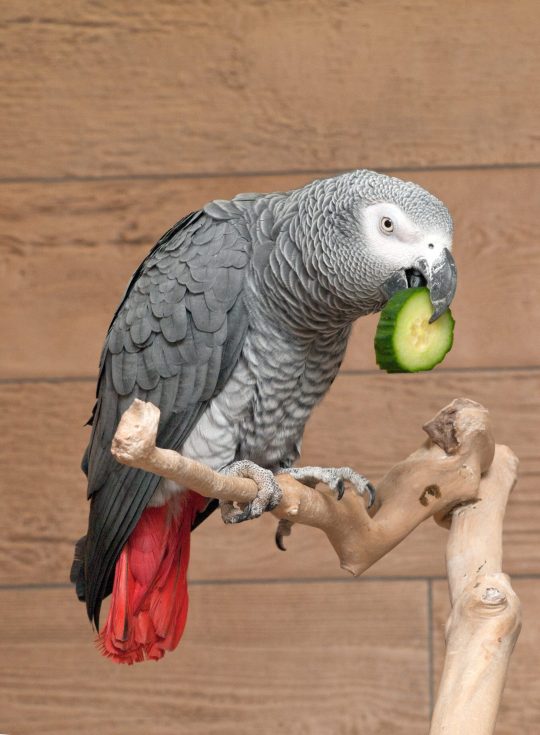
For those who prefer feathered companions, the African Grey Parrot is a highly affectionate choice. These intelligent birds form strong bonds with their owners and can mimic speech, creating a unique form of communication that fosters a deep connection.
6. Miniature Donkey

Yes, you read that correctly! Miniature donkeys are not only adorable but also surprisingly affectionate. They enjoy being petted and thrive on human interaction. These pint-sized equines are perfect for those seeking a unique and loving pet.
Tips for Nurturing Affection in Your Pet
Once you’ve chosen an affectionate pet that suits your lifestyle, it’s essential to foster and nurture that affection. Here are some tips to help you build a strong bond with your furry or feathered friend:
1. Spend Quality Time Together
Schedule daily interaction with your pet. Whether it’s playtime, cuddles, or a simple walk in the park, quality time strengthens your connection.
2. Positive Reinforcement
Use positive reinforcement techniques like treats and praise to reward your pet’s affectionate behavior. This encourages them to continue expressing love.
3. Consistent Routine
Pets thrive on routine. Establish a consistent schedule for feeding, grooming, and play to create a sense of security for your pet.
4. Patience and Understanding
Every pet is unique, and they may express affection differently. Be patient and understanding, allowing your pet to develop trust at their own pace.
best pets that show affection: Conclusion
In conclusion, the world is filled with affectionate pets waiting to bring joy and warmth into your life. From loyal Labradors to cuddly Ragdoll Cats and even miniature donkeys, there’s a perfect pet for everyone. Remember that the key to a loving and affectionate relationship with your pet lies in the time and effort you invest in nurturing that bond.
#pets#us#my pets#cute pets#pets care#funny pets#animals#advertising#artwork#1950s#kitty#petlovers#Prinnay#Reap and Chill#leopards#hunters#Artists on tumblr
1 note
·
View note